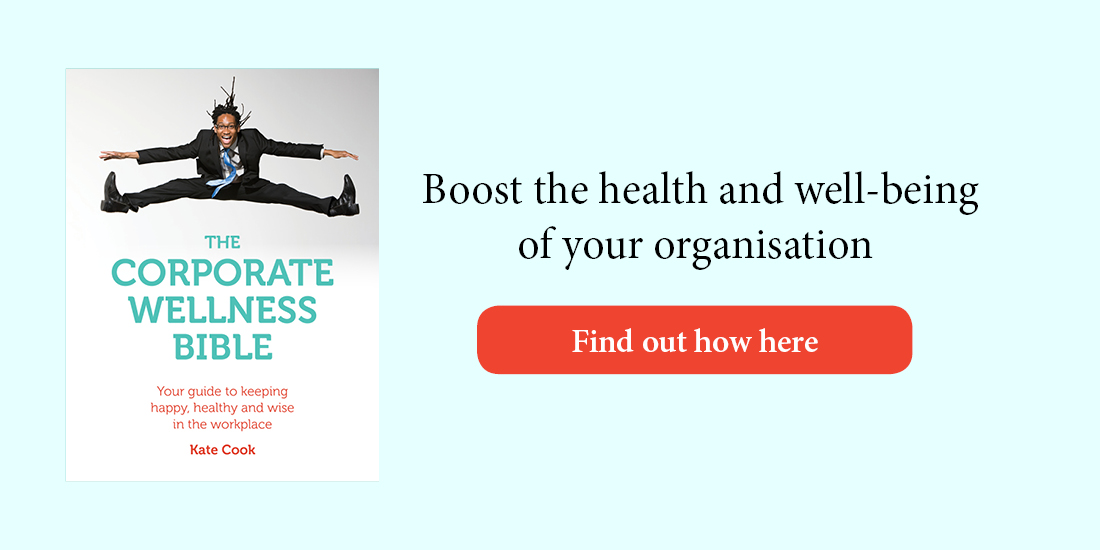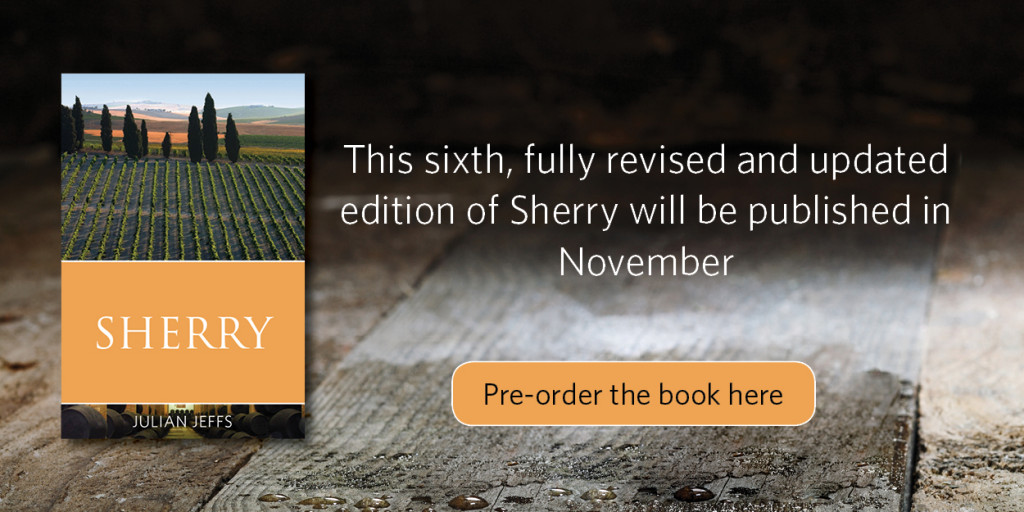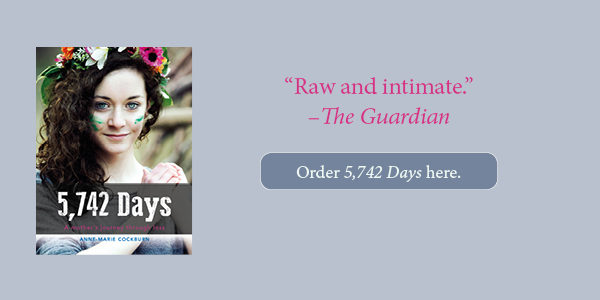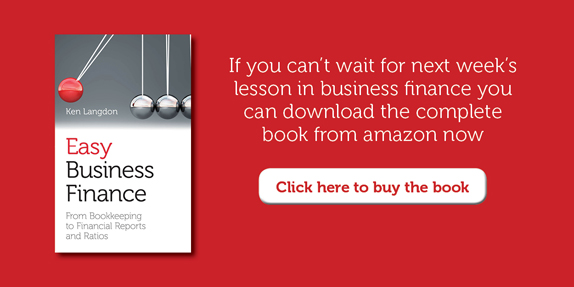Author Archives: Catherine Holdsworth
Crisis management in the office: improving your corporate wellness
23 July 2014 by Catherine Holdsworth in Lifestyle
We’ve all heard of the first aider in the office: the one who has been on the training days and sits at their desk with a well-stocked first aid kit ready to dole out plasters (or even administer CPR) when necessary. What you may not be aware of, however, is the gradual appearance of a new office position, the mental health first aider. As you can probably guess these people are responsible for the mental well being of their colleagues. This is not just some posh gimmick from human resources; these people are your colleagues and there to help you.
The pressures of the modern office can be monotonous and mind-numbing but corporate wellness expert Kate Cook, author of The corporate wellness bible offers tips on how to stay sane in the office.
Don’t catastrophise
Dorothy Parker, on hearing a telephone ring, apparently drawled ‘What fresh hell is this?’ We’ve all been there. On really busy days with multiple deadlines, I’ve got to the stage where I’m scared to answer the phone in case it’s someone demanding something else of me. Then I made a conscious decision to stop being such a victim. My attitude became ‘Why fear the worse until it happens?’ Every time a negative thought crosses your brain, cancel it out with a positive one. This takes practice. An easy way to do it is to develop a mantra to suit whatever crisis you’re in today and that you say to yourself mindlessly every time your mind goes into tailspin. Right now, I have to pick the kids up from school in half an hour. I have four weeks to my deadline for this book and I have done approximately half the number of words I promised myself I’d write today. My mantra is ‘I am serenely gliding towards my deadline and everything will get done’ and every time panic hits, I chant this to myself and feel much better.
Master the only question that matters
The ‘best use’ question was taught to me by my first boss and it is invaluable in negotiating your way through any day with dozens of calls on your time. It helps you to prioritise ‘on the run’, sometimes quite ruthlessly. On the morning of manic days decide what you’ve got to achieve that day and if anything interrupts, ask yourself ‘Is this the best use of my time, right now?’ If the answer’s no, take a raincheck and come back to it later. So if a friend calls at work, nine times out of ten, you won’t chat then, you’ll call her back at a more convenient time – unless, of course, she is very upset about something, then talking to her is the best use of your time. Nothing else is more important. By doing this, I don’t let colleagues sidetrack me with complaints about their lack of stationery, unless of course it’s the best use of my time. (No, you’re right, so far stationery has never been the best use of my time, but you get the idea.)
Always underpromise
A lot of stress is of our own making. Thomas Leonard, who founded Coach University, the first professional training centre for life coaches says, ‘One of th biggest mistakes is to tell people what they want to hear, give them what they think they want, without thinking if it’s feasible for you. You overpromise results you can’t deliver without a lot of stress. And of course, if you don’t deliver, not only are you stressed, they are, too.’ Leonard’s advice is to underpromise rather than overpromise. That way your friends are delighted when you turn up at the party you
said you couldn’t make and your boss thinks you’re wonderful when you get the report finished a day early rather than a week late. Make it your rule from now on to be absolutely realistic about how long it’s going to take you to get things done. And until you get expert at this, work out the time you reckon it will take you to complete any task and multiply it by 1.5.
Keep a time log of your working week so you finally get a realistic idea of how long it takes you to complete all your usual activities. This means you stop kidding yourself about how quickly you will perform tasks in an imperfect world – where you’re interrupted frequently – and you’ll reduce your stress levels hugely.
Life events versus daily hassles
It may be that the nature and scale of the situation we are facing is truly threatening, e.g. loss of a loved one, loss of a job, in which case anyone’s ability to cope will be severely challenged. These significant life events demand significant efforts to cope with. Psychiatrists, Holmes and Rahe, developed a ‘ladder’ of life events from the least to the most demanding; the higher up the steps an event is perceived to
be, the greater the coping effort required. The impact of these events is cumulative; the more we have to deal with, the more our coping skills are tested. Sometimes we may not realise the magnitude of the challenge we face, until it becomes obvious our attempts to cope are not up to the challenge. Then we need to get help, as the saying goes ‘a problem shared is a problem halved’, whether that be through social or professional contacts.
Rather than life events, we more often find ourselves dealing with a series of minor issues, which gradually gang up on us and grind us down over a period of time. We tend to forget about these daily hassles, but they too are cumulative and the more we have to deal with, the more our coping skills are tested. Life can keep piling on life events, daily personal and work hassles, so it is not surprising that occasionally
our coping skills are overwhelmed – the balance tips and we feel we are no longer coping. Time to get some assistance and engage our coping skills before our sense of well-being is undermined and damaged!
Walter White: father, teacher, small business owner
21 July 2014 by Catherine Holdsworth in Business and finance, Entertainment
It’s coming up to a year since I signed up to Netflix, intending to terminate my subscription after the free trial had finished. Walter White, however, had other ideas for me. Vince Gilligan’s series, Breaking Bad, had not concluded and so I was stuck with Netflix until it had. Twelve months on, I’m still paying!
So what can we learn from the antihero Walter White about business strategy? Over five seasons, White built up his small meth business from a mobile home, to an underground hub of activity, eventually going mobile. White declared ‘I’m in the empire business’, but was this really as effective as his original small business? We watched Walt go from teacher, to meth cook, to car wash owner, then culminating as head of his so-called empire.
 Even the greatest empires, however, must crumble. Walt’s ambition to get more money and power meant that he lost control of his company. Once the integrity and credibility of the company had been compromised (yes, even druglords can have integrity), Walt’s fall from grace was inevitable.
Even the greatest empires, however, must crumble. Walt’s ambition to get more money and power meant that he lost control of his company. Once the integrity and credibility of the company had been compromised (yes, even druglords can have integrity), Walt’s fall from grace was inevitable.
The success of Walt’s business was branding and efficiency. Well-planned cook sessions ensured that Walt and Jesse were efficient producers of the elusive blue meth. Even the smallest entrepreneurs can be successful by making their products unique to the market and easily identifiable when viewed alongside the goods of similar companies. Stand out from competitors by giving yourself an edge. Walt’s brand was not just the colour and purity of his product, it was his brand-name: Heisenberg; easily identifiable and synonymous with his product. Much like Walt delegated in his business (he was the cook, Jesse was the dealer) so you can optimise your profit margin by being the best at what you do.
Walt’s legitimate car wash business allowed for the shady meth business to flourish. Without advocating money-laundering, one can learn much from both businesses. Though it worked well to begin with, the growing meth empire was too much for the car wash to cover, as Walt’s wife Skyler struggled to launder the scale of the money that Walt was earning, it wasn’t long before both businesses folded. So what’s more important than an impossible-to-spend pile of money taking up valuable storage space, is integrity for both yourself and the business. Branching out too quickly could make your small business collapse like a house of cards.
Know your business, know what your customer needs and don’t let ambition overwhelm you.
Sherry Baby!
18 July 2014 by Catherine Holdsworth in Wine and spirits
We at Infinite Ideas are very excited today! The manuscript for Julian Jeffs’ sixth edition of the ultimate Sherry guide has arrived and will be ready for publication in November. Here’s a little something to whet your appetites:
A sickly old-fashioned drink fit only for the plughole, or one of the world’s best value and underrated drinks? Focus your attention on Fino and you might soon have an opinion. The reason for the huge success of Sherry during the 50s and 60s was that it was an inexpensive, potent and supposedly long-lived alternative to wine. Now that wine is cheaper we think nothing of cracking open a bottle at the drop of a hat. But Fino Sherry is arguably the most delicious, best-value, highest-quality wine known to humankind. In order to decide where you stand on the issue you need to undertake a most dramatic exercise in filleting: imagine that the only style of Sherry in existence is Fino.
 Sounds radical, but the idea is not that you never allow any other type of Sherry to pass your lips, but simply that if you are to learn to understand Fino you must renounce all other Sherries.
Sounds radical, but the idea is not that you never allow any other type of Sherry to pass your lips, but simply that if you are to learn to understand Fino you must renounce all other Sherries.
Sherry is made in Andalucia near the seaside towns of Jerez de la Frontera (‘Jerez’ is the origin of the English name ‘Sherry’), Sanlucar de Barrameda and Puerto de Santa Maria. The Palomino Fino grape used makes pretty dull table wines but great Fino Sherry thanks to a natural yeast called ‘flor’ that is created by the Sherry-making process. Fino is created by a curious, complex process known as the solera system in which after a few years in the barrel a third of the oldest Sherry is bottled and the remainder is topped up with younger Sherry before being aged further.
Taste Test
• Good-quality Fino • Cheap Fino • Cheap Port • Pouilly Fume •
White Rioja • Cheap Australian Chardonnay.
Tasting these wines side by side will help you to put the unique character of Fino into context. The point to remember when tasting these wines is that unlike the others (with the exception of the Port) Fino is fortified to a strength of around 15% – double that of some light German wines and a third more than most white wines. On an empty stomach you’ll find that it packs an even more powerful punch.
Here’s an idea for you:
Keep a bottle of Sherry in the fridge for use as an early evening sharpener. One evening you could even try drinking it as an accompaniment to food. Just remember that it has quite a high alcohol content.
Taken from Instant wine expert by Giles Kime
A Day in the Life of a Book on the Underground
17 July 2014 by Catherine Holdsworth in 5742 Days, Book publishing, Entertainment
This morning I started my day at Dalston Junction. The weather was so lovely and hot I wanted to stay overground for as long as I could. I’ve got my lovely new sticker on my front so that people don’t throw me away. It says, ‘Pick me!’, ‘Read me!’. I could be their new favourite book.
Oops, excuse me, watch out there, I’m only little. It’s a bit of a squash on the train this morning, people must have important jobs to go to. I can keep you company on your journey, take me home. It’s hard to find a seat amongst all these commuters.
Phew! I manage to get a seat at Caledonian Road. Oh, somebody’s picked me up, yay, I hope you like me.
This afternoon I’m going underground. The escalators are really high for a small book like me. I’m at Whitechapel, on the District Line, going west. Whoosh, this train is coming very fast, it’s a good job I’m standing behind the yellow line! I hop on and zoom, we’re off. All the way under the city, I speed past Westminster, ‘Hello, Prime Minister!’ and on to Earl’s Court. Oh, careful with me. Somebody has put me in their bag, I wonder if we’re going to the London Book Fair…
My final ride of the day is the Bakerloo Line, what a funny name! I get on at Baker Street, such a huge fan of Sherlock Holmes, you know, I wonder if he will enjoy reading me. Oh well, no time to stop, racing all the way up the line to Paddington. Is he there? Perhaps I could share one of his marmalade sandwiches? Just catch the fast train to Oxford, I think I’ll pop in to the Infinite Ideas office and tell them about my adventure!
If you enjoyed reading about 5742 Days, Anniversary Edition’s day on the London Underground, check out the book, which is available now. Special thanks to @BooksUndergrnd for distributing our books.
Tackling the rising rates of obesity from your desk
9 July 2014 by Catherine Holdsworth in Lifestyle
There have been plenty of warnings in the past few years about the rise in obesity in the world but are we really considering the financial costs to ourselves? Never mind the extra expense of a family bag of fun-size Mars bars, how much will treating the effects of obesity really cost you?
Alarming statistics suggest that almost 5% of the Scottish population now have type 2 diabetes: a direct cause of obesity. Factor in the cost of regular trips to the doctor, prescriptions and extra treatment and the bills soon add up. This therefore begs the question, should obese patients pay for treatment that is putting a strain on the already-stretched medical facilities?
In most cases, doctors agree, obesity is self-inflicted, and is becoming more of a strain on medical resources than life-long smoking. We’ve all seen the programmes about The World’s Biggest Man, and Embarrassing Fat Bodies, which make for compelling viewing. What is it about this self-destructive condition which makes us unable to look away? Surely we should take our own health more seriously.
Nowadays we are more plugged-in than ever before, with more of us employed in office jobs that don’t give us the opportunity to get up and walk around. The temptation to sit at our desks and open a packet of cookies is too easy. Joining a gym seems an easy way to combat obesity but all too often those memberships go unused. However, with the ever-rising cost of medical treatment, eating healthily at work can be a small and relatively cheap way to improve your general health.
They say charity begins at home, and in a similar vein getting healthier can begin in the office. Nutritionist Kate Cook advises that, while sugary foods give us an instant rush, the comedown, particularly at work, can be really tough. When those cravings hit, Cook suggests eating small, balanced meals and snacks to keep your energy levels high.
Cook also suggests that though exercise can take some motivation, it can give you a much-needed boost, increase your confidence and reduce your appetite. Even little things like taking the stairs rather than the lift can add up to make a huge difference to your day to day life.
Responsible employers encourage their employees to be healthy and happy; our Corporate Wellness Bible is full of hints and tips. Your health is your most important asset.
Understanding business finance, lesson 2
11 June 2014 by Catherine Holdsworth in Business and finance
Last week we looked at sources of finance. This week we’re taking a look at how the money is used.
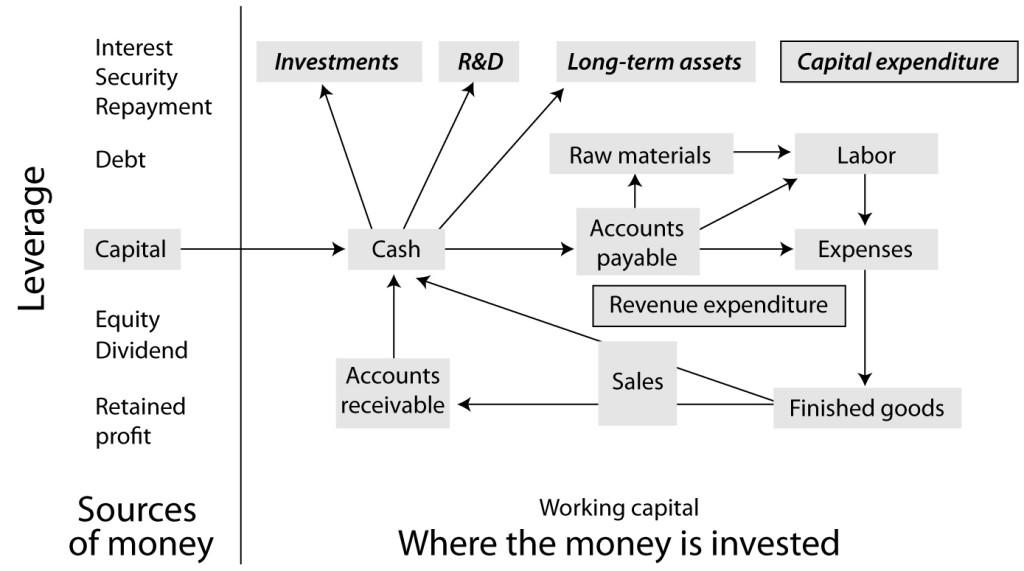
Where the money is invested
The equity and debt come into the company as cash. Managers spend this on, for example, raw materials, labor and expenses in the case of a manufacturer, or mainly on labor in a service business. We will use the manufacturing business as our example since it is easier to visualise the process round the business model.
The combined inputs of material, labor and expenses produce an inventory of finished goods. These are sold to customers for either cash or credit. In the business model diagram, you will also see accounts payable. These occur when materials or services the company acquires from outside suppliers are supplied on credit. So the cycle is complete from the supply of the goods needed to produce the product to successful sales.
You can see that the managers of the business must have sufficient capital to get round the cycle at least once, then the income earned from the first sale can finance the second sale and so on. The term used to describe the amount needed to keep the cycle running is working capital.
There are two objectives in the working capital cycle:
- The managers want to get round the working capital cycle and arrive back at the beginning with more money than they started with. They want to make a profit.
- The managers want to get round the working capital cycle as quickly as possible. In this way they will minimize the amount they need to borrow to finance working capital.
Some industries excel in speeding cash round their working capital cycle. Major grocery stores, for instance, will often take less than twenty days from when they receive goods until the proceeds from the sales are in their checking account. If they can agree a payment period to suppliers of thirty days, you’ll find that their suppliers fund all their working capital needs. And that, because of their immense power over suppliers, is just what they do.
It’s not so easy when you are selling complex products that take a lot of time to manufacture and which can then sit on the shelves waiting for a customer. In this sort of business, the production department should ideally incorporate raw materials and parts into the product on the day they are delivered by the supplier (known as ‘just-in-time’). In this ideal world a customer will be waiting to buy each product as it comes off the assembly line and into inventory. And, finally, in this commercial Utopia customers will pay their bills on the day that was agreed in the contract. This Utopia is difficult to achieve but represents the objectives of the managers of the business.
In the next blog we’ll look at revenue and capital expenditure.

